The Witches (1967)
Directed by: Franco Rossi, Luchino Visconti, Mauro Bolognini, Pier Paolo Pasolini, Vittorio De Sica
Written by: Age & Scarpelli, Bernardino Zapponi, Cesare Zavattini, Enzo Muzii, Fabio Carpi, Giuseppe Patroni Griffi, Luigi Magni, Mauro Bolognini, Roberto Gianviti
Starring: Clint Eastwood, Ninetto Davoli, Silvana Mangano, Toto
AKA LE STREGHE
Italy
AVAILABLE ON BLU-RAY AND DVD: NOW, from ARROW ACADEMY
RUNNING TIME: 111 mins/ 105 mins
REVIEWED BY: Dr Lenera, Official HCF Critic
Five short stories. Superstar actress Gloria travels to a mountain resort, only to evoke jealousy from women and lust from men. A woman offers to take an injured man to the hospital. Widowed Ciancicato Miao and his son seek a new wife/mother. A Sicilian farmer seeks revenge for his daughter Nunzio’s honour. And bored housewife Giovanna tries to explain to her husband Carlo that he’s not as romantic as he used to be….
Aside from some of the old school horror guys like Christopher Lee, Vincent Price and Boris Karloff, Clint Eastwood was the first movie star I truly loved, and the first one I had a huge man-crush on, the guy on screen epitomising cool for me, even though I was too young to legally view many of his movies here in the UK [but did anyway]. Most of his films, including his early ones, were easily available on video, and those that I couldn’t find would turn up on TV eventually – I remember my excitement when even The First Travelling Saleslady was shown. But one film was conspicuous by its unavailability: the Italian The Witches, in which he starred in the fifth of four short stories in an anthology feature. Of course it did eventually get released on DVD though I don’t recall even knowing of its release until yesterday when doing a bit of research for this review. So it’s thanks to Arrow that I finally get to see this obscurity, though I would have thought that it would be a more widely seen piece considering that three of the five directors who shot the different stories are still widely known. It is certainly an odd film, though certainly not an unenjoyable one. Concerned very much with the roles that women play in society, the stories in it give us different interpretations of women and how men feel around them, though at times the exact points being made are hard to discern. Despite the art house pedigree, the tone is light and breezy, sometimes even comic, even when things get positively surreal in places.
Certainly one of producer Dino De Laurentiis’s oddest pictures, it was he who had the idea to get together five of the top Italian filmmakers of the time and get each of them to make a short film about a witch who would be played in every story by his wife Silvano Mangano. Eastwood, who had just made For A Few Dollars More, was given the choice of taking $25,000 in cash, a huge sum at the time especially for someone not quite a superstar, or $20,000 and a brand-new Ferrari by De Laurentiis to play his fairly small part in the movie. He chose the money and the Ferrari, supposedly so that his agent wouldn’t be able to get 10% of the car! The film did poorly in Italy and only had a tiny release outside of Europe, as United Artists bought it, then decided not to release it in cinemas even when Eastwood’s career took off in the US with the release of the Dollars film there. Instead, they kept it in their library vault to prevent its viewing, though some prints did escape, to form the bottom of double and triple bills. This version ran 6 minutes shorter. It picked up a small cult following due to showings on American cable TV which restored four minutes, but here in the UK it went virtually unseen until – well, to my knowledge – now.
The titles are very memorable, 60’s pop art at its best with Mangano glimpsed in car windows and flying around on a broomstick, Pier Polo Pasolini’s name on a rocket blasting off from the moon, Vittorio De Sica’s on a bowlingh bowl, and so forth. Then first up is Luchino Visconti’s The Witch Burned Alive, set and filmed in Kitzbuhel, Austria, and easily the longest of the five tales. It has that lush look and that slow elegance that characterises this director’s later work, as well as making good points about the nature of celebrity, though some may find these a bit to on the nose, such as when one guy at the party film star Gloria is a surprise guest at tells her things like how consumers like a saleable product that must remain the same. She resents being compared to canned meat, but then she doesn’t come across as the most polite sort, one of her first lines being: “I want to celebrate the 10th anniversary of your husband’s infidelity”. Actually she seems to tire of her life, and seems to wearily resign herself to being fought over by two men. It’s all very leisurely, Gloria spending a lot of time wandering around the resort and us being give much time to appreciate [or not] the period decor and fashions, but it gives us a rather haunting climax that will really make you wonder what some of our celebrities actually look like when away from prying eyes. There’s also an oddly creepy moment when Gloria is in a darkened room and various men in dark suits are gradually revealed in the shadows. In terms of cinematography this is probably the most stylised of the five, with quite a few unusual shots including a striking one of a couple kissing reflected in a photograph.
Franco Rossi’s Civic Sense only runs about ten minutes and may seem insubstantial to many viewers, though it either seems to be saying how women support men in times of need and tend to do the best thing for them, or how kindness and duty are spurred on by profit as Mangano’s unnamed character is supposed to drive an injured man to the nearest hospital in Rome, but instead drives by several of them before we get to a rather dark though amusing conclusion. Pier Paolo Pasolini’s The Earth As Seen From the Moon is easily the weirdest segment, taking place in some bizarre alternate reality populated by crazy people and full of odd happenings [it almost feels Monty Python-esque in places] though the metaphors are very accessible and it’s genuinely funny when our slightly objectionable father and son, who reminded me of Don Quixote and Sancho Panza, go looking for a new wife/mother and get it wrong every time. Mangano is a deaf mute who becomes Ciancicato Miao ‘s wife, though he never seems to be satisfied with her, leading to an ironic, bitter conclusion. This might be the only story to actually feature a witch in a somewhat more traditional sense, though out of all the stories this one seems to have the most possible interpretations. It seemed to me to be more than anything else about how men let themselves become idiots over women while not thinking about the point of view of the poor females. The very ripe performance by Toto, a popular Italian comedian whom many non-Italian viewers will probably be most familiar with from when a showing of one of his films burnt down the Cinema Paradiso, is therefore very apt. He and the much younger Ninetto Davoli had just starred in Pasolini’s Hawks And Sparrows, and again make a great pair.
Mauro Bolognini’s The Sicilian Belle is another tiny tale. Sicilian woman Nunzio tells her father how a man gently showed his interest in her, and he retaliates in a somewhat excessive manner. It’s amusing, but that’s about it. And finally we come to Vittorio De Sica’s An Evening Like The Others, the one featuring Eastwood, and he seems to really enjoy playing a boring husband who’s more interested in watching westerns on TV and falling asleep than paying attention to his lovely wife, though to get the full benefit of his performance you really need to watch this particular story in its English language version. I’m not surprised that United Artists didn’t want American audiences to see Eastwood like this when he was on the verge of becoming a huge action star on the back of the Sergio Leone pictures – though he does get to blow a load of people away with two guns during one fantasy sequence. These scenes initially representing Giovanna’s memories of how things used to be before becoming more about wisfulfillment, with a trip to the cinema plying like a musical number in an MGM musical, and lots of them evoking Federico Fellini in style. The staging is almost balletic, though the constant white background gets monotonous, and call me stupid but I’m not sure what this story is really saying except that husbands ought to pay more attention to their wife’s needs. But Mangano, who otherwise only really gets to truly shine in The Witch Burned Alive, is terrific throughout and is clearly loving what she has to do, be it doing a sexy dance [her second in the film] in a public stadium, being passed around various Italian superheroes plus Batman and Flash Gordon, or wearing a nonstop assortment of eye-catching outfits from costume designer Piero Tosi who’s work on this film is incredible.
Main composer Piero Piccioni provides a very smooth, catchy saxophone main theme that reoccurs throughout the first story and appears in different guises in three of the four others. Ennio Morricone only scored The Earth As Seen From the Moon but you can instantly tell its him, the music sounding like a slightly messed up version of one of his spaghetti western scores. A film very much of its time, The Witches‘s oddest quality is that it often comes across as being really rather insubstantial, yet it also manages, in its often absurdist manner, to say quite a bit about the attitudes of us men to the fairer sex. It just chooses to do this with a wink and a smile. I could personally have done without the tiny second and fourth stories, but even they seem to be making worthwhile points. I’ll be honest and say that I didn’t really know what to expect from this curiosity, but it proved to be a most agreeable diversion. While certainly not some neglected classic, there’s a fair bit to enjoy, appreciate and think about in The Witches, a film which certainly did not deserve to languish in obscurity for so long.
Rating: 









While I can’t compare it with any other releases, The Witches generally looks superb in Arrow Academy’s release. I’m sure that The Witch Burned Alive has never been as ravishing to look at, and the vibrant colours throughout often pop out of the screen. Some of the white-dominated fantasy sequences in An Evening Like The Others look rather soft and out of focus, but I’m sure that’s how they were intended to look. Grain level is just what it should be. Arrow actually offer two separate versions of The Witches. I watched the Italian language version up until An Evening Like The Others, then viewed that final story in English, something I recommend. I flicked through the rest of the English language version which has replacement text inserts. The dubbing isn’t very good, and as this is the cut that’s six minutes shorter there are some bits missing, though I only noticed some jarring edits during the title sequence. It also looks great, though I reckon most viewers will only watched this version in its entirety once anyway.
The Italian cut comes with an audio commentary by Tim Lucas, usually busy talking over Mario Bava movies. He has a great knack of really getting into theme and meaning without becoming too heavy, and he’s on fine form here even though there was obviously less production information about this film than some others. He suggests that the movie may have been better with the first tale at the end, and tells of how hearing repeatedly an Italian song as a kid indirectly led him to become a huge fan of Italian cinema. Good stuff and it’ll probably increase your appreciation of the film. The list of contents on several websites mention an interview with Davoli, though I couldn’t find it on my screener disc.
It probably goes without saying that The Witches is certainly not for all tastes, but The Doc recommends Arrow’s release of this eccentric but rather beguiling work to viewers after something very much off the beaten track.
SPECIAL EDITION CONTENTS
*Brand new 2K restoration from original film elements produced by Arrow Films exclusively for this release
*High Definition Blu-ray (1080p) presentation
*Original Italian mono audio (uncompressed LPCM)
*Brand-new audio commentary by film critic and novelist Tim Lucas
*Alternate English-language version
*Reversible sleeve featuring original and newly commissioned artwork by Graham Humphreys
*FIRST PRESSING ONLY: Illustrated collector s booklet featuring new writing on the film by Pasquale Iannone and Kat Ellinger

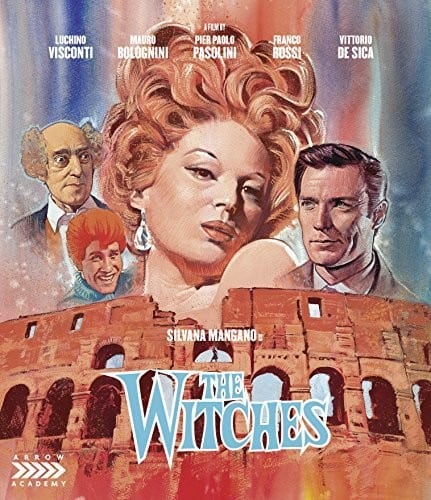
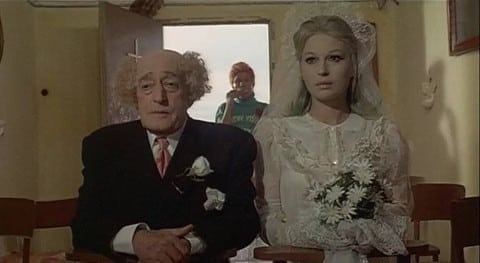
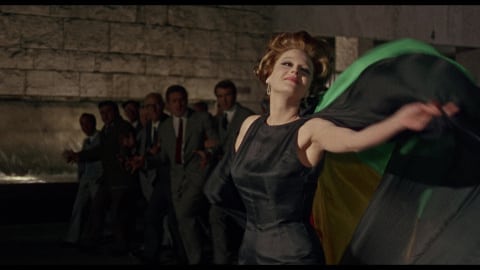

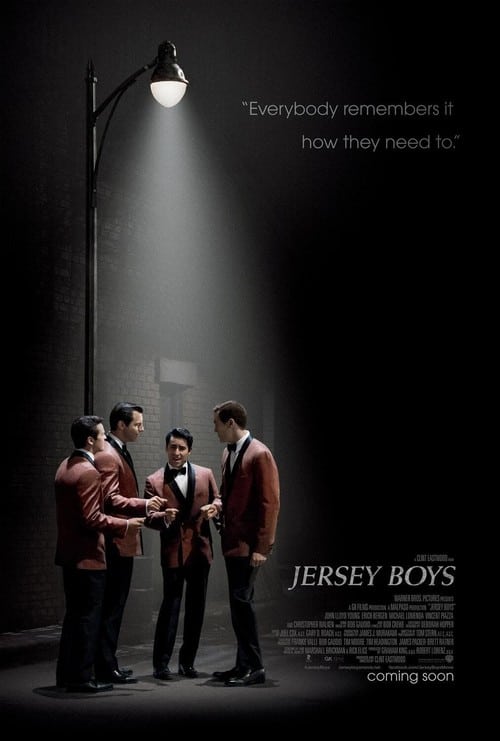
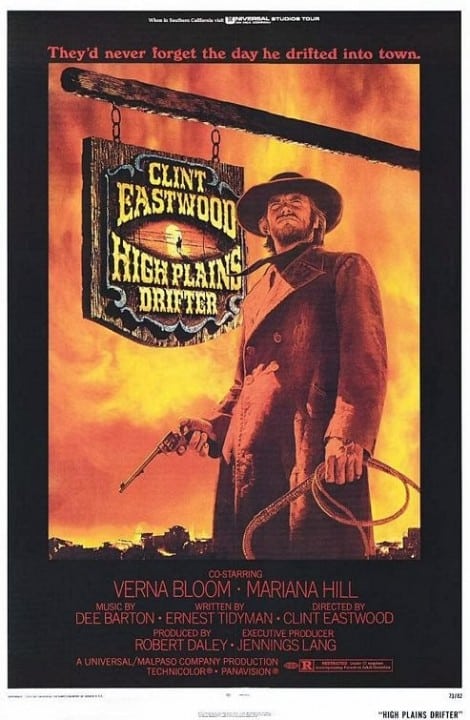
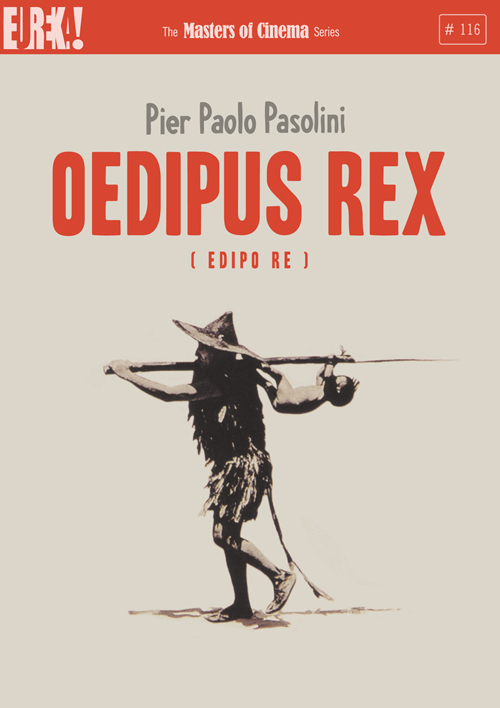
Be the first to comment